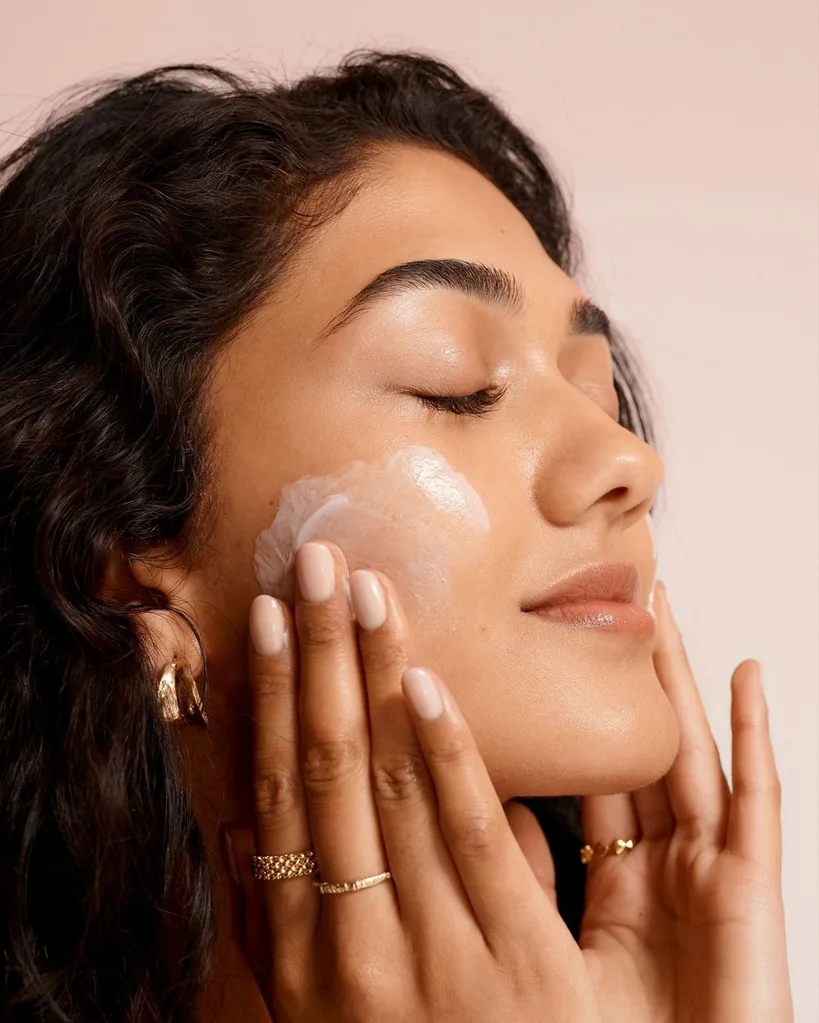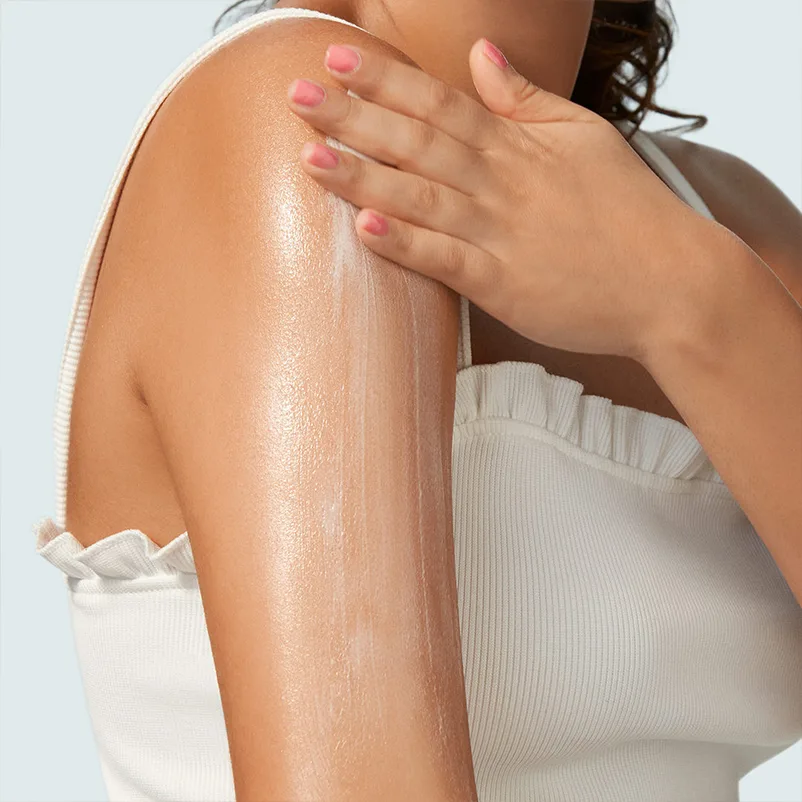Whether you reach for mineral or chemical sunscreen—or just whatever you can get your hands on—there’s no denying that long-term use of sun protection for your skin will offer nothing but a multitude of benefits.
But when the time comes to select either a) the ‘best’ sunscreen for your skin type, b) a sunscreen that absorbs the sun’s UV rays or c) one that reflects damage to the skin, it’s tricky to find your sunscreen soulmate.
Just like skincare products, sun protection can be just as confusing. There are endless offerings on the market, but little explanation of the difference between them. From mineral to physical to chemical, what does it all mean?
Rather than simply opting for the highest SPF rating, the difference between mineral and chemical ‘screens is evident and actually plays a major role in your complexion’s response to sun exposure.
To put our minds—and skin—at ease, Dr Katherine Armour (dermatologist and founder of Bespoke Skin Technology) and principal dermatologist Dr Shreya Andric debrief marie claire Australia on everything you need to know about mineral and chemical sunscreen, what the differences are and which has their tick of approval.

What Is Mineral Sunscreen And Is It The Same As Physical Sunscreen?
When it comes to mineral screen, its many other names can leave you rather confused. But fret not, Dr Katherine explains that they’re one and the same.
“Mineral (also called physical, inorganic or reflectant) sunscreens are mainly based on zinc oxide and titanium dioxide,” Dr Katherine tells marie claire Australia.
Dr Andric agrees, adding that mineral sunscreens are made by “sometimes both” as they “sit on the skin and help to physically shield it from harmful UV rays”.
Typically, one believes that sunscreen offers us one job: protection from the sun. But Dr Katherine says otherwise, in fact she explains that mineral sunscreen don’t only “reflect ultraviolet light (UVL) away from the skin’s surface.”
“We now understand that mineral sunscreens reflect light in the visible light range, but work as chemical filters by absorbing light in the UV range (280-400nm). Titanium dioxide absorbs up to 400 nm, and zinc oxide up to 370 nm. This is just an example of some entities in science being labelled in a number of different ways. Mineral sunscreens may also be referred to as ‘inorganic’ and chemical sunscreens as ‘organic'”.“
Forming a physical barrier—hence the name—on the skin, the sunscreen works to reflect light rays off of the face. And if you fear that the goopy, opaque white zincs from your childhood are coming back to haunt you, think again. Mineral sunscreens have come a long way since their days of chalky, hard to blend formulas.

What Is Chemical Sunscreen?
Unlike mineral sunscreen, chemical iterations work to absorb the sun’s UV rays. And before the panic ensues, it’s important to note that this doesn’t increase any risk of UV damage to your complexion.
“Chemical sunscreens (also called organic or absorbent) function by absorbing UVL and thus mitigating its effects on the skin,” Dr Katherine explains. “Chemical sunscreens often contain a combination of ingredients to provide coverage against both UVB and UVA radiation.”
But how does absorbing the UV rays work to protect the skin—it sounds counterproductive, no? Well, once the rays have been absorbed into the skin’s surface, the chemical sunscreen turns them into heat which is then released through the skin. In fact, chemical sunscreens tend to be lighter and more sheer than mineral sunscreens.
What Is The Difference Between Mineral And Chemical Sunscreen?
“Both chemical and mineral sunscreens absorb UV radiation,” Dr Katherine explains. But before confusion hits, there is a difference between what else each product offers the skin.
“Mineral sunscreens also reflect UV light. Mineral sunscreens are the near-ideal sunscreen as they are chemically inactive safe, and protect against the full UV spectrum,” she says.
As for those avoiding the white casts typically associated with mineral sunscreens, remember that nowadays those same ‘screens have been adapted to offer additional cosmetic benefits. However, Dr Andric adds that chemical sunscreens leave no white cast, because it “tends to be thinner and spreads more easily on the skin”.
“The main downside of mineral sunscreens is that they can leave a white cast when applied to the skin,” Dr Katherine explains. “But, by decreasing the particle size of the zinc and titanium dioxide in mineral sunscreens, mineral sunscreens are now much more cosmetically elegant, as well as being ideal UV absorbers.”
But where do chemical sunscreens fall flat? Dr Andric suggests that they can be the less desirable option since they “require application 20 minutes prior to sun exposure for full effect” and risk an “increased chance of irritation and allergy due to the multiple ingredients used”.
However, this doesn’t mean that mineral ‘screens are without fault. Dr Andric points out that they can be “easily rubbed off” or “sweated off” which requires frequent reapplication. Additionally, they “can be less protective if not properly applied generously as light can penetrate between the sunscreen molecules and enter the skin”.

For those looking to pile less ingredients onto the skin, Dr Katherine confirms that “mineral sunscreens tend to have fewer ingredients than chemical sunscreens” and that “mineral and chemical sunscreen ingredients are often combined to ensure highly effective, cosmetically appealing products.”
But is it better to opt for a mineral or a chemical sunscreen? According to each dermatologist, there is no better option. In fact, they believe that it’s important to have both at the ready.
“The best sunscreen for an individual is the broad-spectrum UVA and UVB blocking SPF50+ sunscreen which they will use daily and reapply every two hours because they like it,” Dr Katherine says. “However, my personal preference is for mineral sunscreens”.
“They have an excellent safety profile, and, are appropriate in all age groups, even very young children (> six months)”, she explains, adding that “mineral sunscreens do not have a risk of causing irritation or contact allergy. Even my rosacea and eczema patients with extremely sensitive skin, tolerate mineral sunscreens”.
“Now that the particle size of ZnO and TiO2 has been decreased to micro- and nano-particles (which are not systemically absorbed) mineral sunscreens can be very elegant formulations which are beautiful to use.”

What Skin Types Are Best For Mineral Or Chemical Sunscreen?
Since both mineral or chemical sunscreens have her tick of approval, is there one that’s best for certain skin types? Dr Katherine believes so.
“If you have very oily skin and are prone to acne or folliculitis, then a light, elegant chemical sunscreen is preferable for your skin type,” she advises.
As for those with sensitive skin, Dr Andric confirms that a mineral offering is the safest bet. “Patients with sensitive skin and skin allergies as well as those that have acne-prone skin will likely tolerate a mineral sunscreen better than a chemical one”.
“Purely mineral sunscreens (that are non-fragrance) have an almost zero risk of causing contact allergy or irritation,” Dr Katherine adds. “Remember that ‘reactions’ to sunscreen may be due to fragrance, preservatives, or the active sunscreen ingredients in a given product.”
So, there you have it. Whether you’re Team Mineral or Team Chemical, there’s no denying that either are sure to be a perfect match for your skin.










